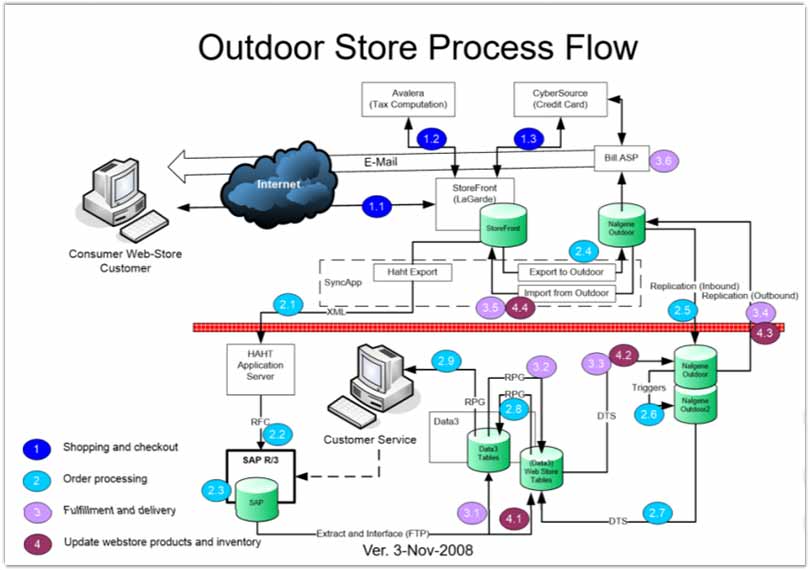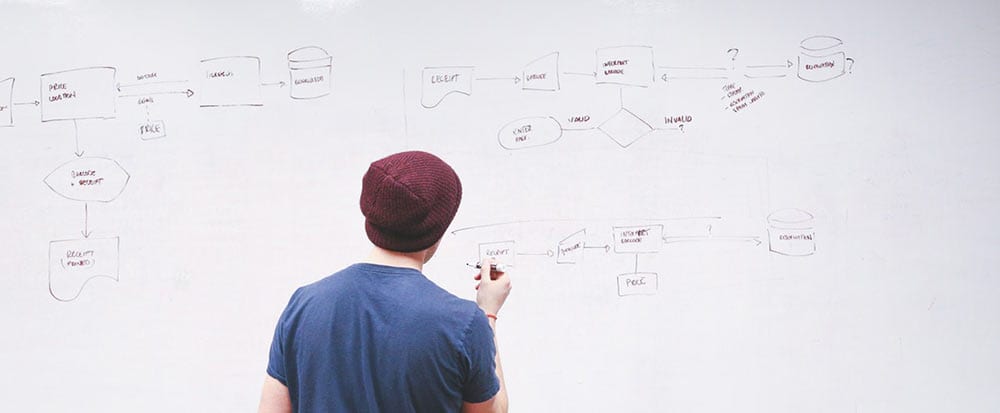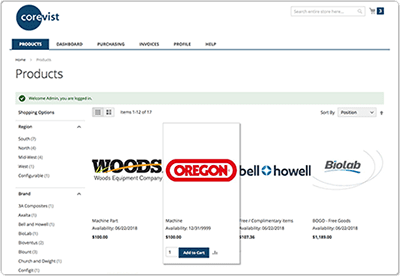Share
Author
Sam Bayer
Share
Magento ERP Integration Done Right
Let’s be honest: Magento ERP integrations are no walk in the park. Syncing complex ERP data with Magento presents all kinds of challenges.
But it doesn’t have to be hard. With the right architecture for your Magento ERP integration, you can nail that data sync, avoid errors, and build a Magento-ERP-integrated store that’s a real workhorse. HINT: That’s what we provide with our managed Magento solution that’s fully integrated to SAP.
In this article, I’ll talk about the difficulties of getting ERP integration right—and why a real-time Magento ERP integration is the key to success. In our case, at Corevist, that means SAP ERP specifically; but the principles I’ll talk about here are generic enough that you can apply them to any ERP-Magento integration.
Need to integrate Magento and ERP?
Corevist is your managed Magento solution partner.
Real-time ERP integration included, out of the box.
1. Why a Magento ERP integration is essential (scalability & user experience)
For manufacturers, long-term ecommerce success is impossible if you don’t integrate Magento to your ERP. That’s because scalability and user experience will suffer without real-time ERP data.
We’ve built our managed Magento solution around scalability. Here’s why:
Without ERP integration, your Magento business won’t scale:
- CSRs must rekey Magento orders into your ERP system. Order errors will abound. Cost of order fulfillment scales linearly with sales growth.
- IT must maintain data in 2+ places (ERP, Magento, middleware…). That means constant manual intervention to maintain a harmonious data landscape.
Without ERP integration, your Magento business will create user experience problems:
- If you can’t display real-time inventory data and pricing that reflects the customer’s contractual terms from the ERP, Magento is dead in the water. The customer needs this essential information to decide whether to place the order. Without it, they’ll turn back to phone/fax/email ordering–if they don’t leave you for the competition.
- If you display inaccurate inventory data and pricing, customers will learn to distrust ecommerce. They won’t adopt your Magento store, and you may not see ROI as a result.
In other words, for your permanent B2B ecommerce solution, a real-time integration between Magento and ERP is essential.
There’s only one use case in which a manufacturer should launch a non-integrated ecommerce store: the proof of concept. If you’re demonstrating to the rest of your organization that ecommerce is viable, or if you’re launching a new product or making a first foray into a new territory, a stand-alone store with no integration is perfectly fine. Just realize that it’s not a permanent solution. Whenever you move to a permanent solution, like Magento, it must include ERP integration.
2. Why Magento ERP integrations fall down: Technical complexity
Chances are, if you’re reading this, you know how complicated the ERP integration is. Just in case you need further proof, check out this diagram:

This is a schematic of what a typical B2B web shop looks like. It’s real. Now, this particular solution has since been re-architected; but many of the technologies in this diagram are still in use today, despite the fact that it’s from 2008.
Let’s be honest. We’re all professionals, and an architecture like this isn’t actually that hard to put into production. We relish the challenge, right? But here’s the rub: a machine this complex is incredibly difficult to debug. What happens when a customer calls in because they got the wrong price? How do you track down the source of that error?
And that’s a good project, one in which the integration was successfully completed. Sadly, many integrations don’t get this far—in fact, they don’t get anywhere at all. Check out this email that came across my desk recently from a distributor who considered Corevist 7 years ago and is now back on the market for ERP-integrated ecommerce:
Me: “My records tell me that XXXX went with Magento and a local integrator back in 2011. Are they not happy with Magento or the integration to SAP?”
Consultant: “There is NO integration with SAP because they couldn’t figure it out.”
–Email correspondence, March 14, 2018
That’s option B for every manufacturer who launches ecommerce. The thinking goes, we want to get the website up; we’ll leave the integration for Stage 2, or 3, or 4… But that’s a slippery slope, and this email is a prime example of the danger. Seven years later, this distributor has no integration, and the website is dead on arrival because the customer can’t get accurate information in ecommerce.
HINT: That’s why Corevist offers managed Magento solutions with SAP integration included.
So yes, the integration is complex. It’s a domain of expertise all its own. That’s why we recommend working with integration specialists. (In the case of SAP ERP, that’s us!)
Why are we so adamant about this? Because believe it or not, technical complexity is the easy part of integration. The real mountains to be climbed are cultural, both inside and outside your organization.
3. Why integrations fall down: Organizational complexity
Here’s where B2B ecommerce is almost nothing like the simplicity of B2C. Not only do you have to deal with the technical aspect, you have to navigate a complex map of concerns within the organization. Because manufacturers are often new to the world of ecommerce, it’s rare that they define a specific leadership role tasked with running the web store. That can lead to confusion and competing demands from different stakeholders within the company.
Here are the stakeholders we see most often, and their concerns.
- Customer Service: “I need real-time ERP visibility into all orders, including those from Magento, to give customers One True Truth about their account standing when they call in.” (Hint: That’s what our eTrack module is all about—but it’s not just for CSRs; it’s for customer self-service, too.)
- Sales: “I need real-time ERP visibility into buying history so I can sell with intelligence. I may also need the ability to place orders in Magento on behalf of customers, with real-time order posting to the ERP. Oh, and what will my commissions look like after we launch ecommerce?” (Hint: Partner with Sales from the start to make sure your reps become ecommerce evangelists, not detractors.)
- Marketing: “I need a clean, easy-to-use web store that allows me to run promotions, build our brand, and attract new customers. It should be easy for a new customer to create an ecommerce account and place an order.”
- IT: “Don’t create more work for me. If you’re going to launch Magento, please integrate it to the ERP in real time so I don’t have to worry about batch updates, synchronization, and data maintenance.”
- Finance: “Will the ecommerce store allow customers to place orders when they’re over their credit limit? We can’t have that. Also, will customers be able to pay down their invoices through self-service and credit card payments? That would make life easier for us.”
How can you possibly meet all of these concerns without a real-time Magento integration to the ERP? The answer to each of these concerns depends on that live interaction.
That’s why, for manufacturers, it’s essential to bake in the Magento ERP integration from the very beginning.
The Takeaway: Find a partner and integrate first (not last)
Unless you have expertise in the ERP system yourself, it’s best to find a partner who can manage all aspects of your Magento web channel. You need someone who understands how complex ERP business rules will interact with the Magento user experience.
If you’re dealing with major SAP ERP versions (ECC, All-In-One, R/3, ECC on HANA, or S/4), that partner is Corevist. You won’t find a team with more dedication or expertise–we have 300k+ hours of experience building and managing Magento solutions with real-time SAP integration.
If your project involves a different ERP system, you can still take this philosophy to the table. In fact, we hope you do. It could save you a lot of headaches.
Moving forward: FREE case study
Wondering how a real-time Magento ERP integration plays out in real life? Download this case study on Mannington Mills. You’ll learn how this manufacturer of flooring saw 150% sales growth in the digital channel with Magento integrated to SAP through Corevist.
[want_more title=”Learn more” subtitle=”FREE Case study: 150% Sales Growth with Rich Content” description=”Learn how a leading flooring manufacturer more than doubled sales with a B2C-style catalog.” button_text=”Download Now” button_link=”https://www.corevist.com/mannington-mills/” button_class=”btn btn-primary mannington-ae” title2=”See it for yourself” subtitle2=”Talk to us” description2=”Curious what the Corevist Platform can do for you? Let us show you a personalized demo. You’ll see ecommerce with real-time SAP data.” button_text2=”Schedule Demo” button_link2=”https://www.corevist.com/demo/” button_class2=”demo-popup”]










